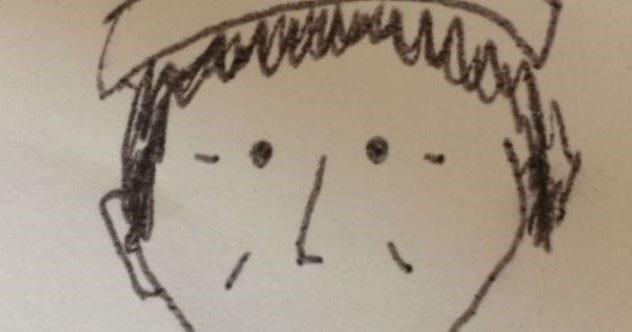One of the most interesting tools for solving crimes is the police sketch: an artistic recreation of a subject based on the memory of a witness or the remains of a victim. These sketches tend to be pretty unsuccessful for various reasons, including the unreliability of the witness’s memory and the artist’s ability.
Due to this, it is a common tactic for forensic artists to focus on exaggerating defining features of an individual to differentiate and jog the memories of potential informants. The result is often a sketch or composite that looks cartoonishly inhuman or nightmarishly alien. This is a list of 10 of those wild police sketches and their equally weird backstories. Be warned, while some of these sketches are absolutely hilarious, there is a fair share of nightmare fuel as well.
Related: 10 Times Nonhumans Were Called As Witnesses
10 The Girl in the Suitcase
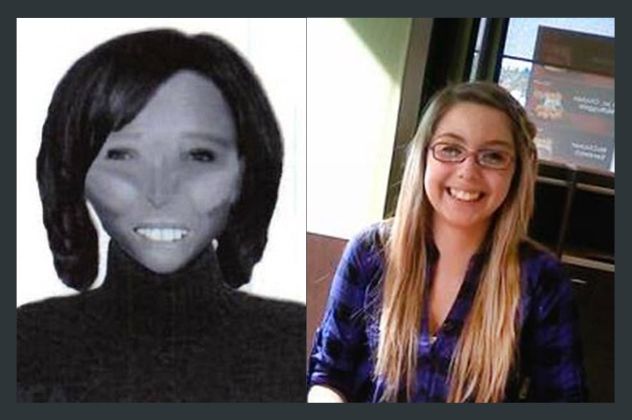
In 2014, two suitcases were found, each containing the body of a woman. The first was quickly identified as Laura Simonson, but the second required more work. Police released a sketch of the woman, but her body was so badly decomposed that they decided to really lean into accentuating certain features to extremely inhuman proportions. This is a common tactic utilized by sketch artists because it helps differentiate the subject from the hundreds of other human faces people see daily. It also helps jog people’s memories by highlighting and magnifying the subject’s most defining features. The result, in this case, is an artist recreation that looks like a terrifying alien-chipmunk hybrid.
Despite this, a family saw the sketch and noted that the prominent buck teeth, small lower teeth, high cheekbones, and small eyes bore a striking resemblance to a loved one they hadn’t heard from in a while. With that lead, authorities were able to compare dental records and confirm the identity of Jenny Gamez.
Jenny was killed and stashed away by a former police officer after they met online. The night she was killed was their first date. Thanks to the sketch artist who decided to enhance the features of Jenny’s face to extreme levels, law enforcement was able to identify her quickly. This is a good reminder that while it may seem disrespectful to release a sketch that ridiculous, there’s a reason for doing so.[1]
9 Deandre Charles
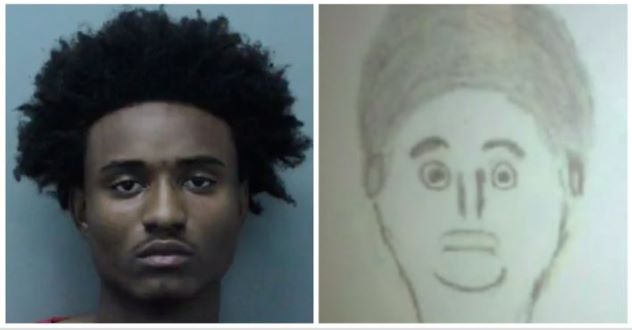
Also in 2014, a Rabbi named John Raskins was visiting Miami when he was shot and killed. A witness to the crime provided their own sketch of the suspect to the police. Despite it looking like a character from Bob’s Burgers, police used the sketch to quickly find their suspect: 14-year-old Deandre Charles.
Police released a mugshot of the suspect along with the sketch they used to catch him. While the sketch was thoroughly mocked, it does sort of look like him. Like, you know those apps where you can turn yourself into a Simpsons or South Park character? It’s kind of like that.
Another crime solved by a sketch… or was it? The problem with this case is that law enforcement didn’t use the sketch as a tool to form a lead. Instead, they treated the sketch as proof in and of itself. Deandre Charles was investigated and on trial for three years before DNA evidence exonerated him.
Could you imagine being charged with murder because someone made a goofy sketch that kind of, sort of resembled you? Deandre was justifiably upset and is now suing the authorities on allegations that prosecutors had the DNA evidence to exonerate him but still pursued a guilty verdict. To Charles’s credit, he has channeled his anger into a musical career as Papito El Franklins. He’s actually pretty talented.[2]
8 Horrible Drawing, Great Results
Jocelyn Park was visiting one of her favorite stands at the Central Market in Lancaster, PA, when she noticed an unfamiliar man standing behind the booth holding a wad of cash. After failing to subdue the man, Jocelyn contacted the police, but before she did, she thought she should jot down a description of the man while it was still fresh in her memory. That is when the graphic designer with two art degrees decided to do one better and draw the suspect. The quick sketch was… simple. The sketch quickly went viral, with people mocking it relentlessly online and newscasters stifling laughter any time it was revealed.
Jocelyn noted that she was hurt by the criticisms, but she was unwavering in her confidence that the suspect would be caught based on her artistic rendition, no matter how amateur it appeared. Sure enough, an officer saw the sketch and thought it looked like someone they knew. The officer then produced a photo lineup, and Jocelyn pointed out the same suspect. About a week after Park’s drawing, Hung Phuoc Nguyen was arrested.
After her highly ridiculed drawing resulted in an arrest, the public’s perception began to change. Many began to admit that there was a strong resemblance between Jocelyn’s sketch and the perpetrator. Jocelyn was vindicated. Nowadays, Jocelyn has started a side hobby where you can email her a photo of yourself at [email protected], and she will make a quick sketch of you. While the last story showed how dangerous a simple sketch by a witness can be if treated as evidence, this story shows the other edge of the sword.[3]
7 The Crimes of Lettuce Head
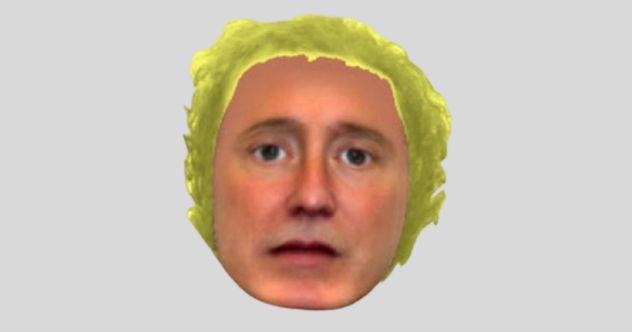
To properly describe this absurd recreation, we first need to discuss the art of E-FITs. An E-FIT, short for electronic facial identification technique, is a computer-generated facial composite based on descriptions from a witness. People have a hard time describing facial features, but they instantly recognize a face when they see it, and that is exactly what an E-FIT attempts to do. Witnesses describe certain aspects of an individual. The computer will piece together these features and provide witnesses with slight variations of the generated composite for them to choose from until they (theoretically) hone in on the most accurate recreation.
As you can expect, this can lead to some really crazy results, but none wilder than the infamous “lettuce head.” This is an E-FIT created by an elderly victim who had £60 stolen from her handbag. The burglar was described as having “wavy blonde/greying hair,” but that was not what was released to the public. A Hampshire Constabulary spokesperson said they unleashed this new cryptid onto the world because they believed the clarity of the facial features would have made it wrong to withhold the E-FIT. They followed that up with, “We are, though, currently experiencing technical problems with the quality of the hair and are waiting for an upgrade to the system.” No kidding. Surprisingly, lettuce head has not been identified or captured. As one commenter notes, “Maybe he returned to his roots.”[4]
6 Big Mouth
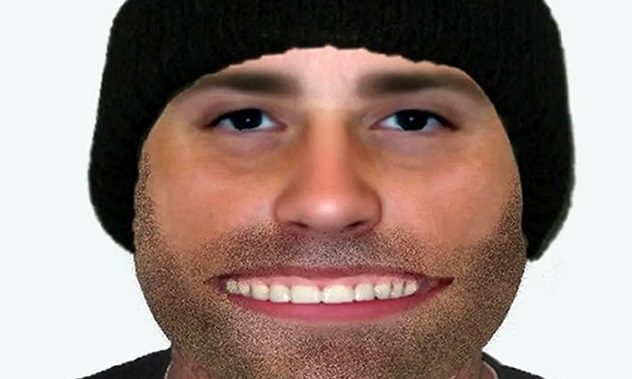
I know what you’re thinking: another E-FIT malfunction. Not so. This E-FIT was generated exactly as the victim described the perpetrator. In fact, the Warwickshire Police were aware of how ridiculous the E-FIT looked when they released it on Twitter. Going as far as to say that the victim agreed to the quality of the picture. Despite the ridicule and memes (you really should check out the post on Twitter for some comedy gold), the Warwickshire Police posted a follow-up thanking everyone for the exposure they were giving it online.
Apparently, this was a case of a distraction burglary where the suspect pretended to be a worker from a housing company, coerced his way inside the victim’s home, and stole a small sum of cash. I can definitely see why the victim was distracted, and I don’t think it was simply his charm that got him into the home.
Sadly, that seems to be the end of the story for ol’ smiley here. Unfortunate for the victim because she hasn’t received justice from the theft, but maybe it’s good for society because it lets us continue our lives without thinking about a man with a giant mouth attempting to enter our home and steal our money. He’s like the evil tooth fairy… the toothy fairy? I’ll see myself out.[5]
5 John List Clay Bust
Extra points for this artistic recreation for deviating from the norm. While most artists on this list decided to forego realistic proportions and focus on exaggerating features to ridiculous results, this artist decided to do the opposite and create a hyper-realistic three-dimensional representation of the suspect.
In May 1989, Frank Bender, a forensic artist, appeared on the television show America’s Most Wanted with a life-like clay bust. The clay bust was an age-progressed approximation of a man named John List. List had a familiar story: nice guy, perfect family, lucrative job, perfect life. The only problem was that List got fired from his lucrative job. He pretended to go to work for weeks until the debt started piling up. List decided he wanted a do-over in life, so he shot and killed his wife, children, and mother who lived with them. After that, List went on the run and was successful for 18 years. Then the episode of America’s Most Wanted aired.
Less than two weeks after airing, the FBI went to Virginia and arrested an accountant named Robert Clark. Someone who had seen the John List episode thought Robert Clark looked a lot like the clay bust of John List and called in a tip. Fingerprint evidence confirmed that Robert Clark was John List, and he was convicted in 1990.[6]
4 Cheryl Bowman
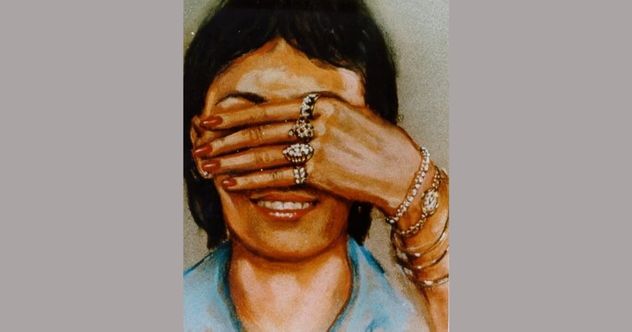
In the morning hours of a Houston day in 1989, individuals searching for aluminum cans stumbled upon the decomposing body of a woman. The woman wore a large amount of jewelry, had very nice teeth, and nicely polished red nails, and that’s about it. There are a lot of things that are unknown about this case, and it is unclear whether any other information regarding this case is based on fact or speculation. One thing that has made this Jane Doe case live on, however, is the unusual sketch of the woman.
The sketch depicts the woman smiling with her hand covering the top half of her face. It makes sense because this pose shows some of the defining characteristics of this woman: her jewelry, painted nails, and teeth. In addition to this, a narrative has developed that the sketch depicts the woman covering the top half of her face because she was decomposed or beaten so badly to the point that there was nothing recognizable. While I cannot find confirmation of this anywhere, it makes sense and adds to the case drama. The woman was later identified as Cheryl Bowman, but little information about how she was identified can be found.
This sketch certainly has a lot of things going for it. The hand covering the face and the cheshire-like smile create a creepy “I know something you don’t know” mystique like some kind of macabre peek-a-boo. Kudos to whoever drew this because not only did it help in getting the victim quickly identified, but it has continued to spark interest among internet sleuths who may someday discover what exactly happened to Cheryl Bowman.[7]
3 Glenn Edwin Rundles
How about another hilariously rudimentary sketch that makes the suspect look like a cartoon character? Rundles’s sketch was released concerning a robbery at knifepoint. These sketches are released after getting approval from the victim, which is something I think is important to mention since this sketch was developed from two witnesses. This means that two people looked at this sketch and thought, “Yup, that’s him.”
An officer saw the sketch and thought it looked a lot like Rundles, who was identified by the victims. Once again, we see the sketch artist getting the last laugh. In fact, Rundles saw the sketch in the paper and thought it looked so much like him that he attempted to alter a tattoo on his neck to hide his identity. Maybe go for the fake mustache and glasses next time.[8]
2 Selene Delgado Lopez
As we’ve seen, these police sketches have the ability to sear themselves into one’s mind. Combine that with the viral power of the internet, and a police sketch may be able to imprint itself into the mind of an entire population. In this way, these police sketches can evolve and take on an identity of their own. Such is the case of Selene Delgado Lopez.
Back in the ‘90s and ‘00s, Mexican Channel 5 (Canal 5) would air short segments between their regularly scheduled programming called “Servicio de la comunidad.” Segments would show photos of missing persons while a narrator read a description of the person and their last known whereabouts. A frequent entry on these segments was Selene Delgado Lopez. For years, her grainy photo was featured on Servico de la comunidad, but there were never any updates to her photo or personal information. Something about the photo and the frequency of her appearances struck a chord with people, and Selene became somewhat of an urban legend, with multiple theories swirling about her.
Due to the lack of information regarding Selene, a popular idea emerged that Selene was not a real person but an AI-generated image. A YouTube video surfaced comparing the facial features of Selene’s photo to multiple other photos and sketches from around the world. It appeared that Selene’s facial dimensions matched a certain police sketch extremely well. It was a police sketch of Derrick Todd Lee, the Baton Rouge serial killer.
Derrick Todd Lee tormented the Baton Rouge area in the ‘90s and early ‘00s when he was caught partly due to this sketch. Even after his capture, it’s no wonder that this sketch has continued to live on through the internet. The stark expressionless face, coupled with those wild, wide eyes, really conveys the sentiment of a cold, calculated and violent murderer. I do admit that the comparison of Selene and the sketch make them look eerily similar, but it just feels like a coincidence.
The full story of Selene Delgado Lopez is way too big for the scope of this list, but suffice it to say, it’s a wild ride. One involving a Facebook hoax, creepy videos posted by the official Canal 5 Twitter, and video game mods. All this stemmed from a creepy missing persons alert and an even creepier police sketch unleashed onto the internet.[9]
1 The Ina Jane Doe
In 1993, two Illinoisan girls discovered a severed head tangled in the bushes of Wayne Fitzgerrell State Park near Ina, Illinois. Authorities determined that the head belonged to someone who had died within the previous two weeks but could not find a match to any local missing persons. As a result, we have what I believe to be the most terrifying police sketch ever.
So, what gives with this drawing? As mentioned before, it is a common strategy for artists to amplify certain characteristics of a person to ridiculous proportions to conjure memories from people who may recognize them. In this case, the Ina Jane Doe had Wryneck Syndrome, a twisting of the neck that causes the head to tilt at an odd angle. That explains the awkward pose. The artist also decided to exaggerate her facial asymmetry, which gives her a somewhat ghoulish appearance.
Unfortunately, the artist’s efforts did not produce any leads for law enforcement, and the case went cold. It took 29 years, but the case was eventually reexamined in 2022, and the Ina Jane Doe was identified as Susan Hope Lund via DNA analysis. It is unclear why this case was chosen for analysis, but it is possible that the notoriety of the police sketch may have drawn interest from the investigators.
It is clear that Susan bears very little resemblance to that famous sketch: her wryneck is not nearly as noticeable, nor is her facial asymmetry. While the resolution of identifying the Ina Jane Doe has been helpful to the family since her kids were led to believe by law enforcement that she abandoned them and didn’t want to be found, there still remains the mystery of her murder. To this day, that police sketch continues to make the rounds on the internet, imprinting itself into the minds of those who see it. Now it can also imprint the story of Susan Hope Lund and possibly help solve her murder.[10]
